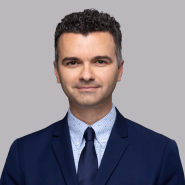Board affirms Examiner's rejection because reference disclosed issuing SQL commands to a database to obtain statistical information
- January 27, 2012
- Blog Post
Associated People
In Ex Parte Brunet (Appeal No. 2010-000122 of Application No. 10/822,092), one of the issues before the Board was whether the Examiner erred in rejecting Claims 1 and 2 under 35 U.S.C. §103(a) as unpatentable over Rignell (U.S. Patent Publication No. 2001/0053688), Marran (U.S. Patent No. 6,549,770), Lawrence (International Publication No. WO 98/38823), Pickover (U.S. Patent Publication No. 2002/0116665), and Davenport (U.S. Patent Publication No. 2002/0198976). The Board affirmed the Examiner’s rejection.
Independent Claim 1 recited the following: A method of providing customer care within a mobile care framework, comprising: capturing device profile data over-the-air from a device agent within a mobile device, the device profile data comprising user-specific and device-specific data; matching the device profile data to a customer profile, the customer profile including a profile history; correlating the device profile data to a database of known mobile device issues and associated solutions to the mobile device issues using an analytics engine programmed to identify a solution for the mobile device; forwarding to the mobile device over-the-air the solution identified by the analytics engine for execution by the device agent, wherein the device agent is programmed to capture the device profile data and execute the solution on the mobile device; receiving, to the database from software application developers, updates or patches that match problem criteria of the mobile device issues; and allowing hardware vendors and the software application developers to query the database and obtain statistics on a number of mobile devices with a particular installed software.
Dependent Claim 2 recited the following: The method of claim 1 further comprising, allowing the hardware vendors and the software application developers to access the database and provide fixes for bugs in software for the mobile device.
Appellants contended the combination of Rignell, Marran, Lawrence, Pickover, and Davenport fails to describe or suggest the claimed features. In particular, Appellants argued that the Davenport reference does not teach the allowing step of method Claim 1. Appellants noted that Davenport discusses a manufacturer that collects performance data about a computer executing an application, and transmits the collected data to a warehouse server to generate a report. However, Appellants indicated that the collected data is not obtained by the manufacturer from querying a database at the server, and does not pertain to statistics regarding mobile devices running a particular application.
The Board analyzed the Davenport reference and indicated that Davenport discloses a software manufacturer that utilizes a software program during an instrumentation session to collect data about the usage, performance, and status of a local computer executing an application. Furthermore, the Board discussed that Davenport’s collected data is stored in a session file, which is transmitted to a central server to summarize the statistical information in a report to allow the software manufacturer to obtain feedback as to how its software product is being used by users. Additionally, it was also noted that Davenport specifically discloses that software manufacturers can use structured query language (SQL) commands to generate the summarized statistical information in the report.
Based on this analysis of the Davenport reference, the Board concluded that Davenport does indeed teach the allowing step of Claim 1. Specifically, the Board found that Davenport teaches that software manufacturers can issue SQL queries to a central repository to obtain statistical information regarding how users are utilizing a designated software application. Thus, according to the Board, Davenport allowed the combination of references to obtain statistical information regarding the performance of an application software in mobile devices.
With regard to Claim 2, Appellants contended that although the Pickover reference discusses that software vendors may transmit patches to a database, the reference does not show that the vendors are allowed to access the database to provide the patches.
However, the Board found that Pickover’s disclosure of software manufacturers creating patches and updating existing patches in a database suggests that the manufacturers are allowed to access the database. Furthermore, the Board noted that because Appellants did not show any portion of the Pickover reference that precludes the software manufacturer from accessing the database, Appellants did not show error in the Examiner’s rejection.
Consequently, the Board sustained the Examiner’s rejection of Claims 1 and 2 under 35 U.S.C. §103(a) as unpatentable over Rignell, Marran, Lawrence, Pickover, and Davenport.










 Counseling & Strategic Advice
Counseling & Strategic Advice IP Transactions
IP Transactions Litigation
Litigation PTAB Proceedings
PTAB Proceedings Start-Up
Start-Up Technology Transfer
Technology Transfer Trademark & Designs
Trademark & Designs U.S. Patent Procurement (Application Drafting & Prosecution)
U.S. Patent Procurement (Application Drafting & Prosecution)








